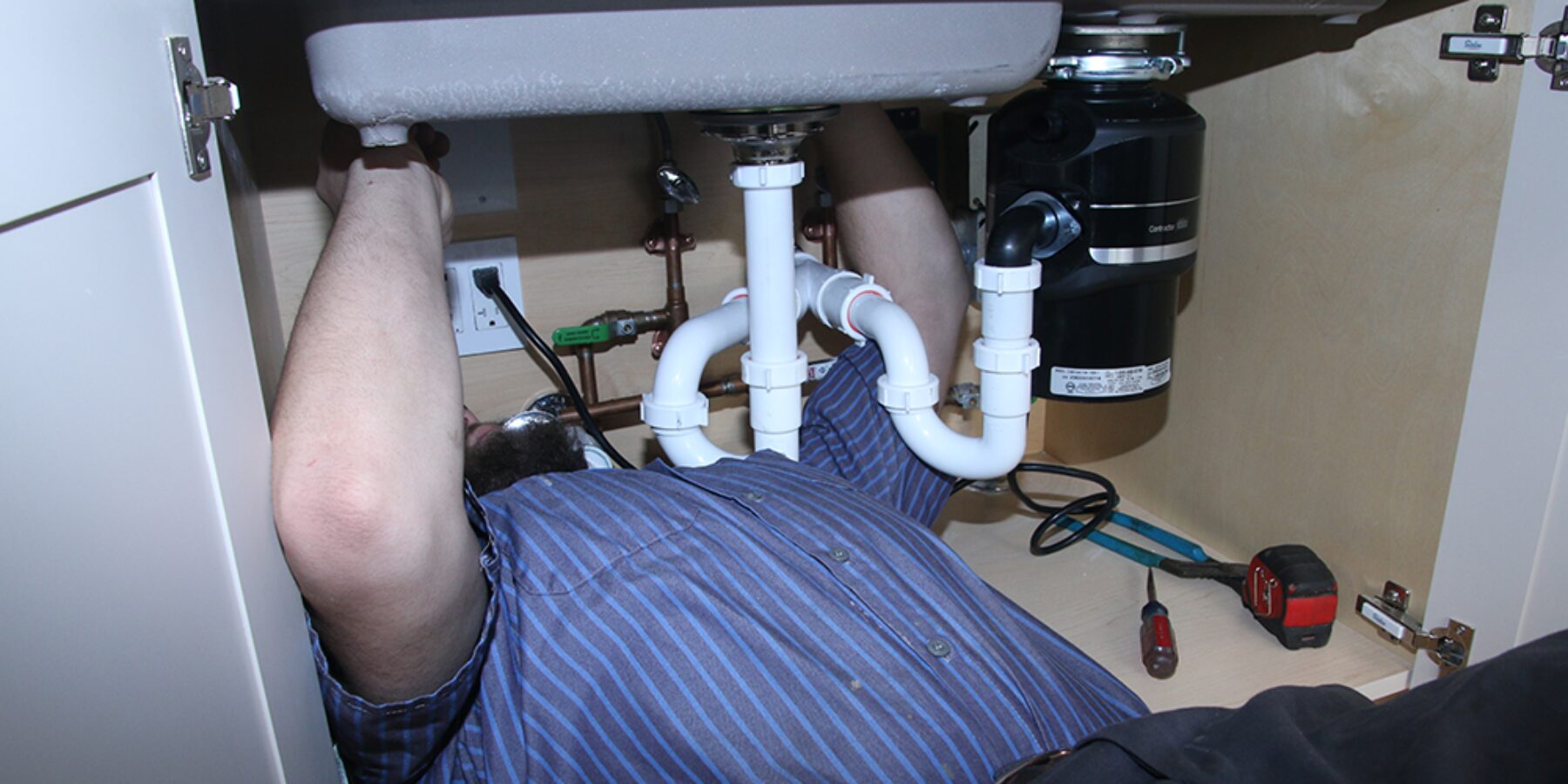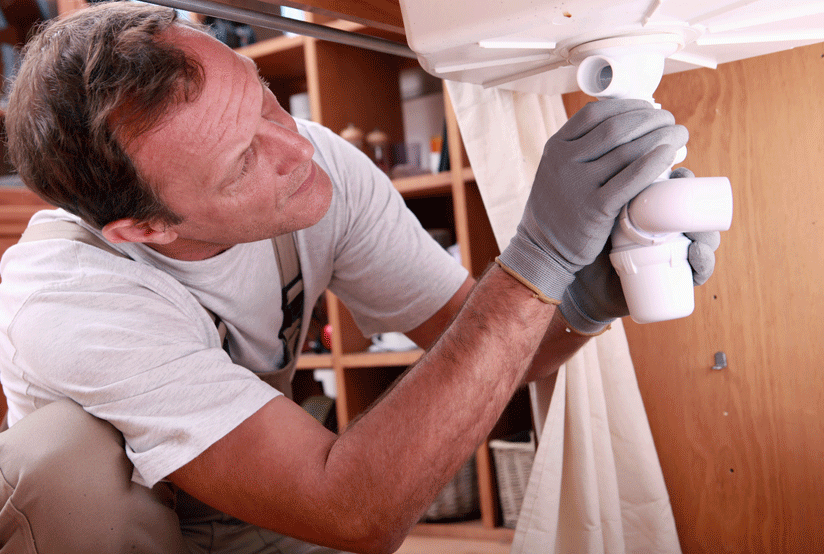Crucial Steps To Repair A Slow-Draining Sink
Crucial Steps To Repair A Slow-Draining Sink
Blog Article
Here on the next paragraphs you'll find a good deal of helpful content regarding Solved! How to Fix a Slow Sink Drain.

Intro
We've all been there: You're cleaning your teeth or washing your hands, and you see the water pooling in the sink. Instead of swiftly swirling down the tubes, it sticks around, transforming your once-refreshing morning regimen right into a mini swamp scene. A slow-draining sink isn't just bothersome; it's frequently an indication of bigger plumbing problems prowling below the surface area. The good news is that a lot of slow-draining sinks can be taken care of with a little know-how, a few fundamental tools, and some perseverance. All set to tackle this project head-on? Let's roll up our sleeves and dive right in.
Comprehending the Reasons For a Slow-Draining Sink
Before you begin poking around in your pipes, it helps to recognize what may be triggering the downturn. Understanding the source makes it less complicated to choose the right solution.
Devices and Materials You'll Need
The right tools make all the difference. Luckily, you won't need a fully stocked plumbing professional's van to finish the job.
Step-by-Step Guide to Taking Care Of a Slow-Draining Sink
Currently, allow's get involved in the nitty-gritty. This detailed process will certainly lead you via straightforward strategies to recover your sink's drain.
Step 1: Eliminate and Clean the Stopper
Often, the stopper (that little plug you lower to obstruct water) is the very first perpetrator. Remove it very carefully and clean off any kind of hair or substance trapped around its base. Rinse it thoroughly prior to placing it back in place.
Step 2: Use a Bettor to Dislodge Particles
Got that plunger all set? Position it over the drain and offer it a couple of company pumps. The concept is to develop suction that can loosen up any kind of blockage. If you see little bits of particles drifting up, you get on the right track.
Action 3: Attempt a Drain Snake or Wire Wall Mount
If the bettor doesn't do the trick, it's time to highlight the drain snake. Gently feed it right into the drain and twist as you go. You might really feel some resistance-- that's likely the clog. Maintain turning and drawing up until you remove the obstruction. If you do not have a drain snake, a straightened cord wall mount can operate in a pinch.
Step 4: Use a DIY Drainpipe Cleaner
A natural cleaner made from baking soda and vinegar can break down recurring grime. Put half a mug of baking soft drink into the drainpipe, followed by half a mug of vinegar. Let it fizz for around 15 mins, after that flush with hot water. This chemical reaction usually does wonders for minor obstructions.
Tip 5: Reassemble and Test the Sink
Put everything back together and run the faucet. Does the water currently swirl down the drain at a reputable speed? If yes, offer yourself a pat on the back. If not, don't misery-- there are still a few even more tricks up your sleeve.
Necessary Tools for Do It Yourself Repairs
A plunger is your go-to starting factor. A little, sink-sized plunger develops suction that can remove minor blockages. For more relentless clogs, a drainpipe snake (sometimes called a plumbing professional's auger) works wonders. A pair of gloves, a flashlight, and perhaps a pair of safety goggles are also convenient.
Suggested Cleaning Solutions
Moderate recipe soap and hot water can assist break down oily build-up. A mix of cooking soft drink and vinegar is a tried and true natural remedy, and enzymatic cleansers offer an even more environment-friendly approach. Maintain chemical drain cleansers as a last resource, as they can be extreme on your pipes.
Usual Perpetrators Behind Slow Water Drainage
So, what's obstructing points up? Generally, it's a mix of everyday debris-- think hair, soap scum, toothpaste residue, and leftover food bits. Gradually, these little bits build up and cling to the pipeline wall surfaces, progressively narrowing the passage and making it harder for water to pass through. In many cases, natural resource from difficult water can additionally include in the substance, developing the excellent tornado for persistent blockages.
When is it Time to Take Action?
If you observe the water draining slower than common, it's an excellent idea to step in quicker as opposed to later. Waiting also long can cause complete clogs, unpleasant smells, and even pipeline damages. If the water takes more than a couple of secs to clean out after switching off the faucet, consider it a warning and get ready to place on your DIY hat.
Safety First: Precautions and Preparations
Before you launch into unclogging setting, think about security. You're handling potentially unclean water and debris, so slip on a pair of gloves. If you're utilizing chemical cleansers, make certain the space is well-ventilated and adhere to the directions on the label.
Safety Gear and Work Space Configuration
Put down some old towels or cloths around the sink area to capture splashes. Clear away any items that could get in your means, like soap dispensers or tooth brush owners. See to it you have great lights-- grab a flashlight if required.
Alternate Methods for Stubborn Clogs
Not all obstructions are developed equal. If your sink still rejects to work together, take into consideration these alternate remedies.
Baking Soda and Vinegar Method
We currently discussed this, but it's worth noting once again. This mild, eco-friendly technique is much safer than chemical cleansers and often quite effective.
Chemical Drainpipe Cleansers
Enzyme-based cleansers make use of all-natural germs to absorb organic matter. They're an excellent choice if you're wanting to avoid harsh chemicals. Simply bear in mind, they may take a bit longer to function their magic.
Chemical Drainpipe Cleansers: Advantages And Disadvantages
Chemical cleaners can blast via difficult obstructions quick, but they're not without drawbacks. They can generate heat and fumes, damage pipelines if utilized excessively, and present environmental threats. Utilize them sparingly, and constantly comply with the instructions meticulously.
Safety Nets to Keep Your Sink Flowing
Avoidance is the very best treatment. By embracing a couple of easy behaviors, you can keep your sink from decreasing to begin with.
Normal Cleansing Habits
Wipe down the sink basin and component location frequently. Eliminate hair or food bits prior to they have a possibility to wash down the drainpipe.
Preventing Unsafe Materials Away
Reconsider prior to discarding coffee grounds, grease, or coarse vegetable scraps down the sink. These offenders hold on to pipeline walls, developing blockages gradually.
Regular Maintenance Checks
Arrange a fast month-to-month examination. Run warm water through the sink for a couple of mins, focusing on the flow. If it appears sluggish, act quickly before it comes to be a full-blown obstruction.
When to Call an Expert Plumber
In some cases, despite how tough you try, that block simply will not budge. That's when it's time to generate the pros.
Indicators That Indicate a Much More Severe Concern
If your sink drains slowly in spite of numerous efforts, or if you notice water supporting in various other components (like your shower or toilet), you may have a more major plumbing problem hiding much deeper in the system.
Stabilizing DIY Initiatives with Specialist Assistance
While do it yourself can save you cash and offer a sense of success, there's no pity in calling a professional. A specialist plumbing professional can examine your whole pipes configuration, guaranteeing there's no underlying damage or long-term trouble that might cost you more down the road.
Contrasting Expenses and Long-Term Solutions
Before choosing, think about the big picture. An affordable, quick fix might solve the trouble temporarily, yet investing in a much more permanent service could conserve you cash and tension in the future.
Weighing the Costs of Do It Yourself vs. Expert Solutions
Do it yourself fixes commonly set you back little bit more than the price of a bettor or a container of cooking soda. Professional services, on the other hand, featured a price tag yet might prevent repeated issues and expensive repair work later.
Purchasing Quality Fixtures and Upgrades
If your sink's layout adds to regular obstructions, it might be worth upgrading to higher-quality fixtures or changing the pipes format. Consider this a financial investment in your house's capability and convenience.
Verdict
A slow-draining sink can seem like a small irritability, but it's commonly an indication that your plumbing requires a little tender loving care. By recognizing the source, utilizing the right tools and strategies, and devoting to easy preventive measures, you can maintain your sink moving easily. And when all else fails, never ever be reluctant to employ an expert-- your home's pipes deserves the investment in treatment and upkeep.
Three Common Ways to Fix a Slow Drain
Baking Soda Method
Boil a full pot of water. Measure out cup of baking soda and pour it down the drain. Then take cup of the magical cleansing substance known as white vinegar and drop that down there too. Allow the mixture to fizz in the drain for five minutes as the vinegar and baking soda combine. Now dump in that whole pot of boiling water. This combination of cleaning substances should clear out anything that is causing your sink to drain slowly. If it doesn t...
Zip-It
If the baking soda method doesn t clear out your drain, it may be because a significant amount of hair and/or other debris has collected there and you need to remove it. Purchase a Zip-It tool at any home improvement or hardware store and insert it into your drain. It will catch any collected hair or debris that s blocking the flow of water. Pull it out. If it s got a big clump of hair, etc. on the end, you ve probably got your culprit.
Drain Cleaner
If these methods don t work, there is the standard drain cleaner that you can also buy in a hardware store or even your local grocery store. It s better if you can use a household solution, but these drain cleaners often work in a pinch. They re very simple to use. You generally just dump them in your drain and wait. If even this method is not effective, it may be time to call the plumber.
https://www.mrrooter.com/oneida/about-us/blog/2017/july/three-common-ways-to-fix-a-slow-drain/

As a passionate person who reads about 7 Ways To Fix A Slow-Draining Sink Before You Call A Plumber, I was thinking sharing that piece of content was really helpful. Remember to take a moment to promote this blog entry if you enjoyed it. Thank you so much for going through it.
At This Website Report this page